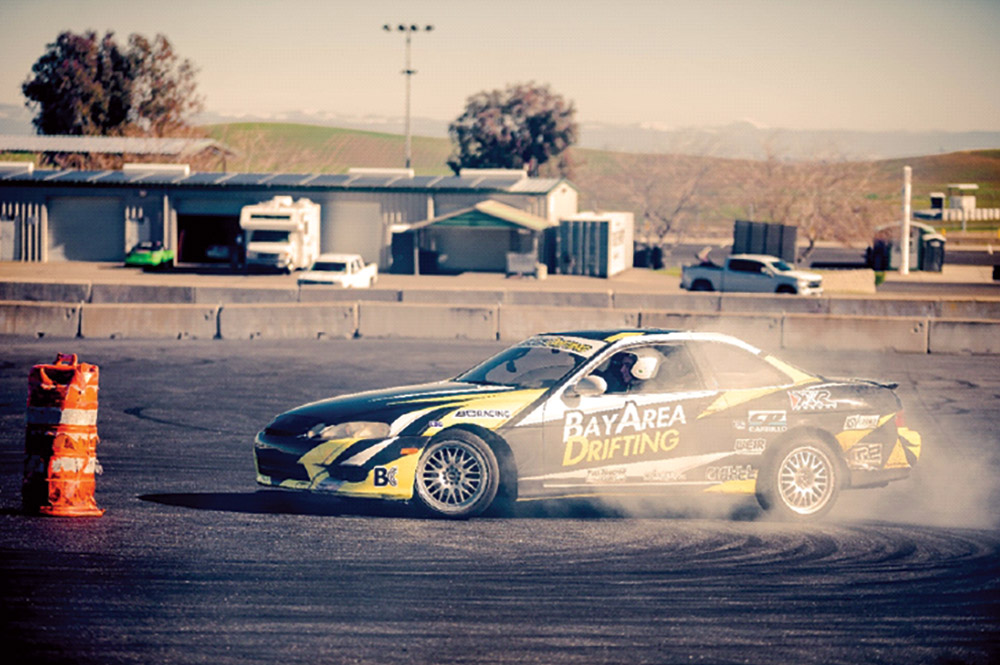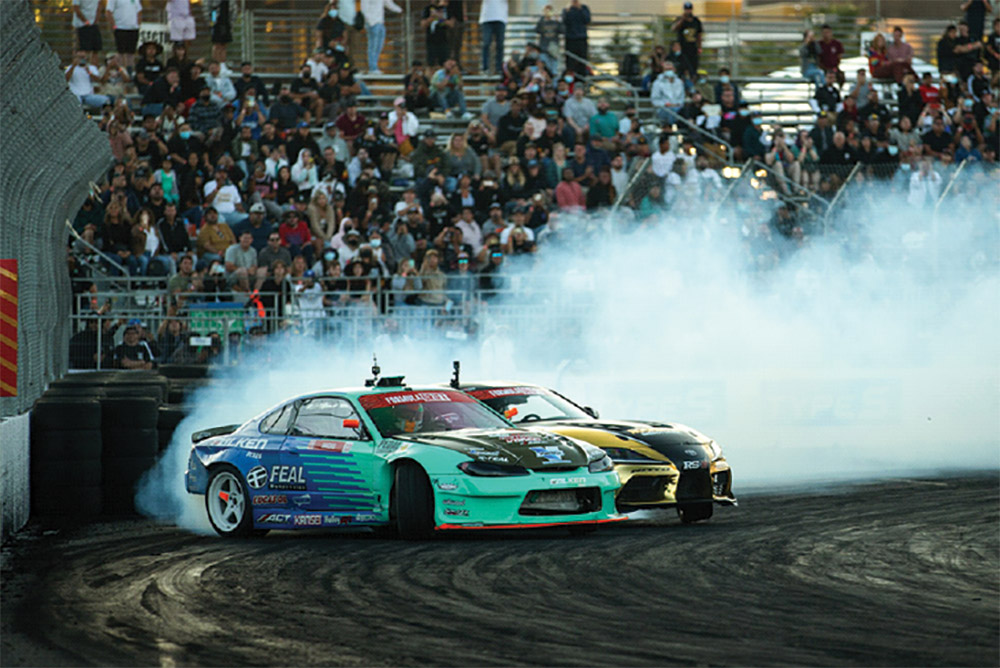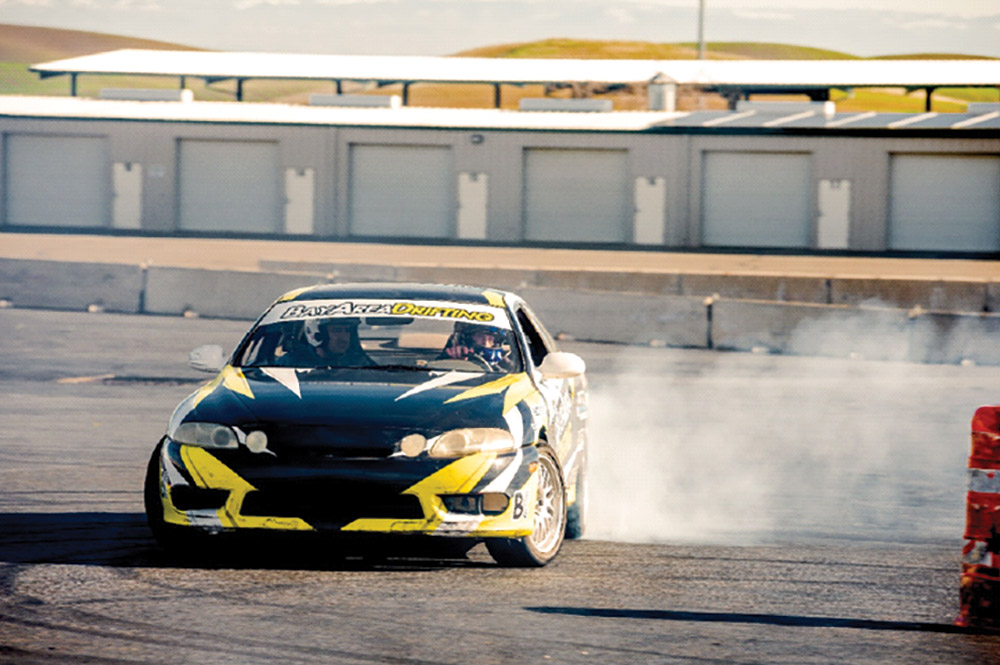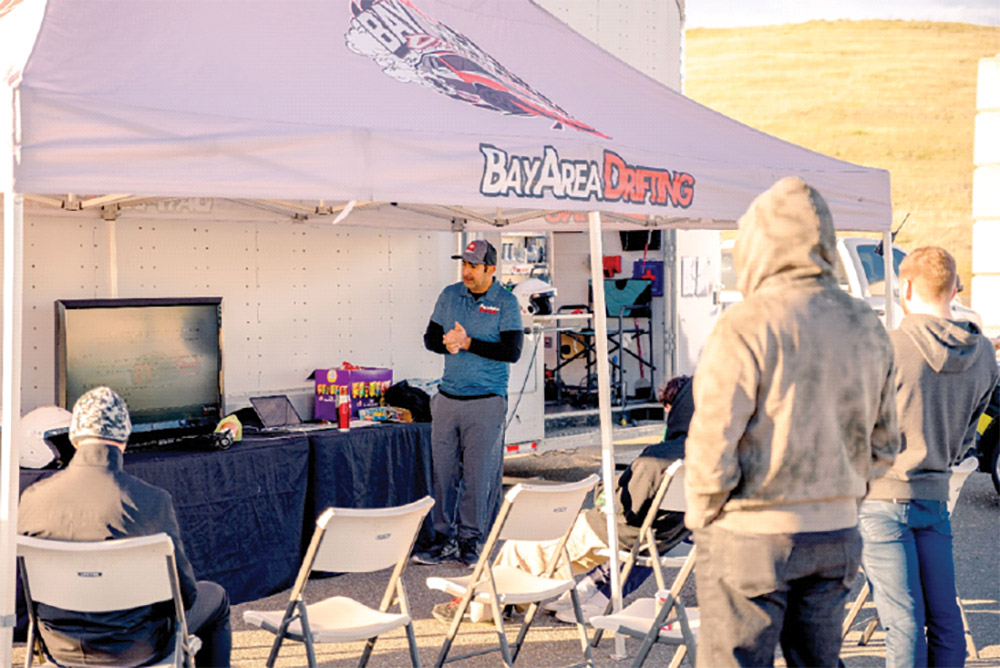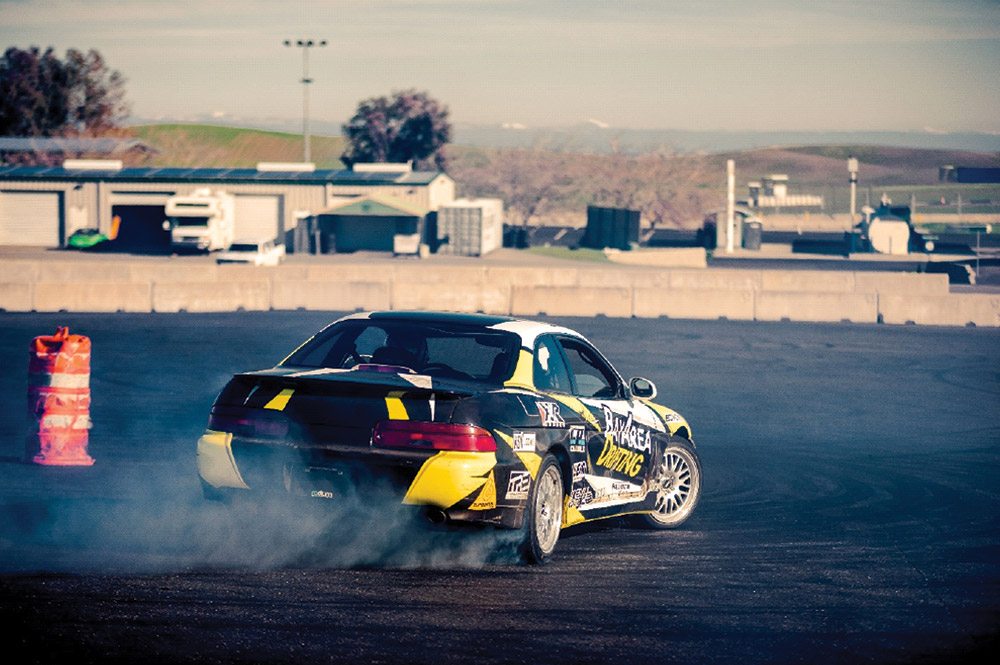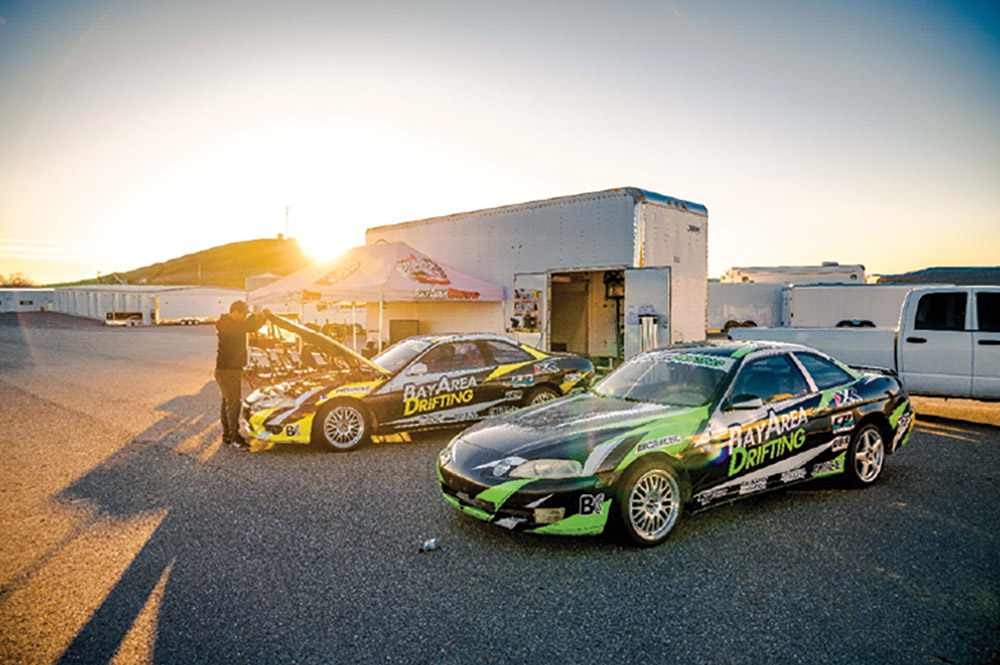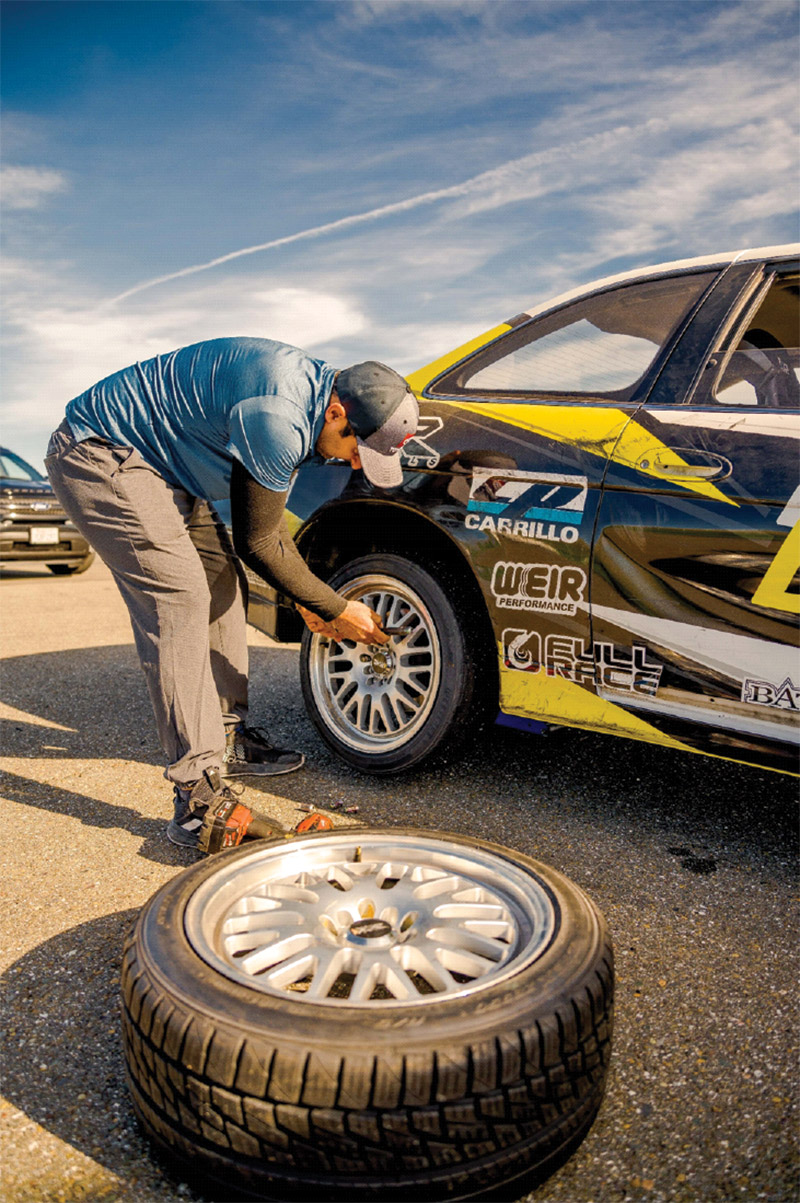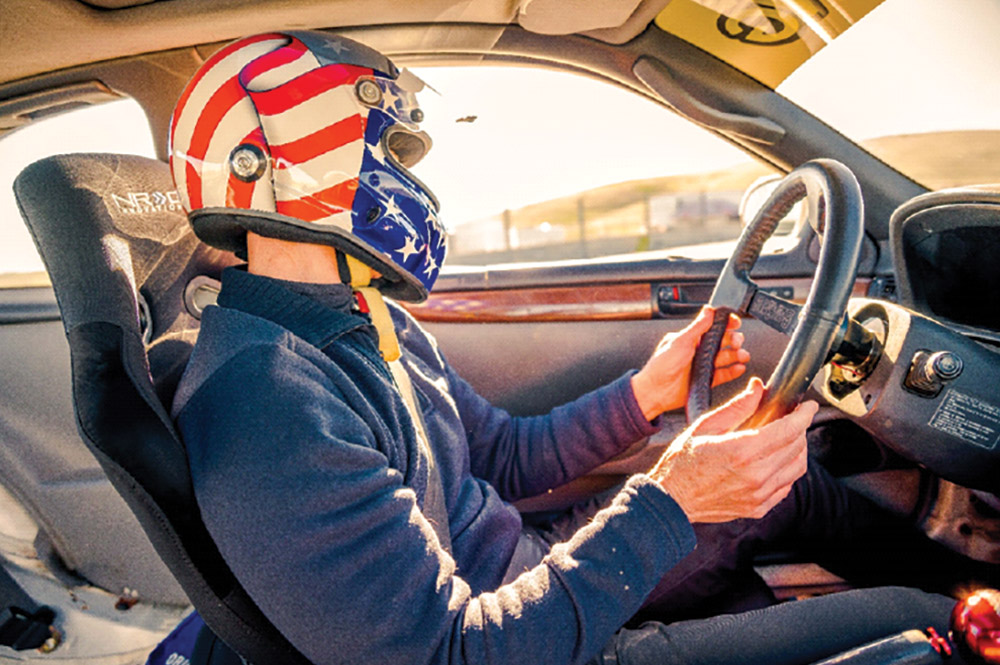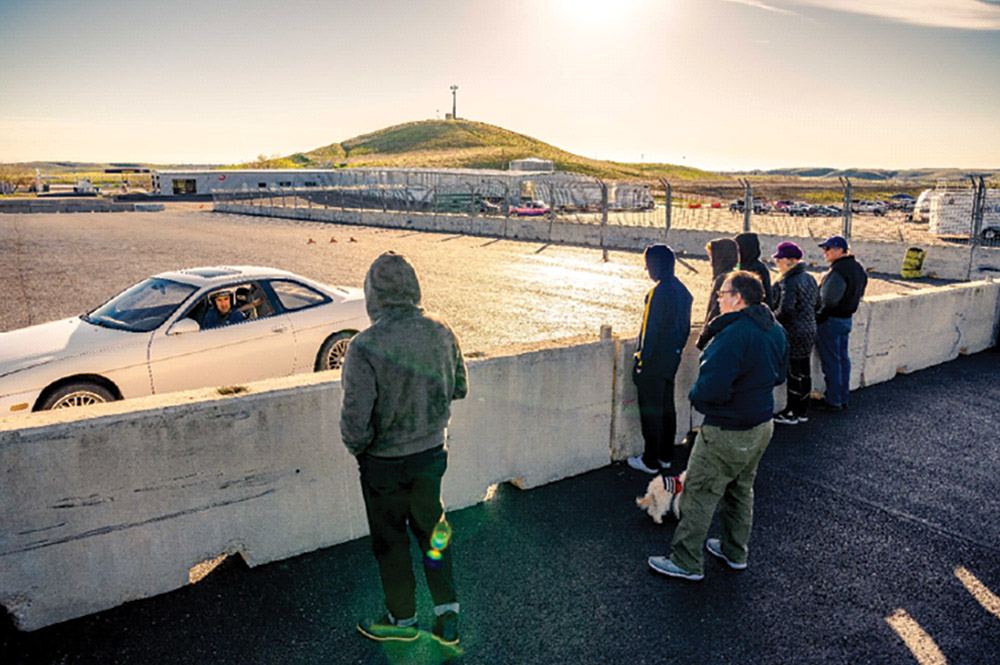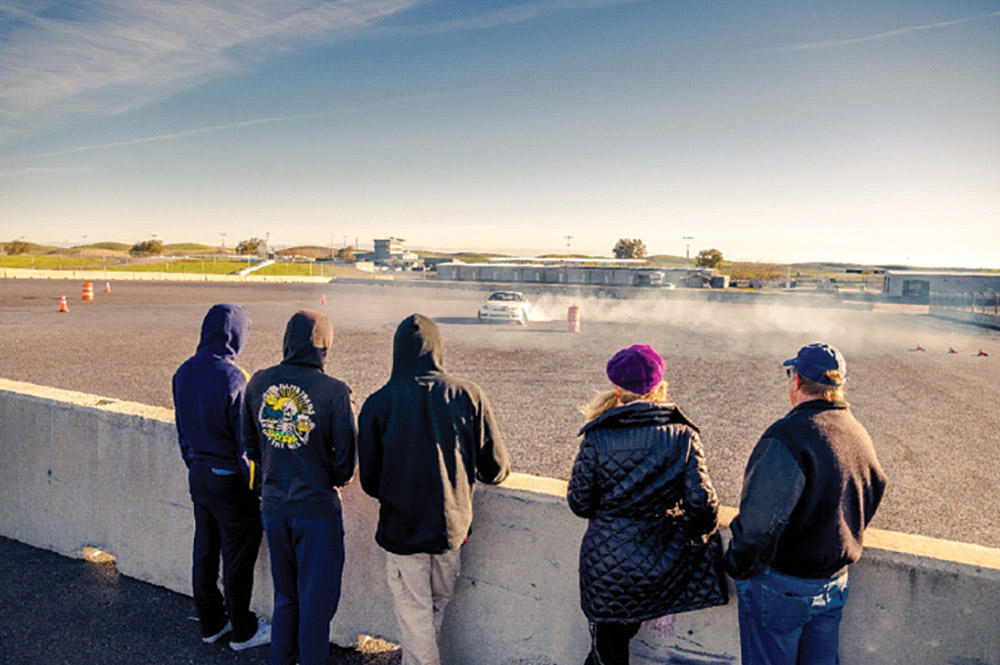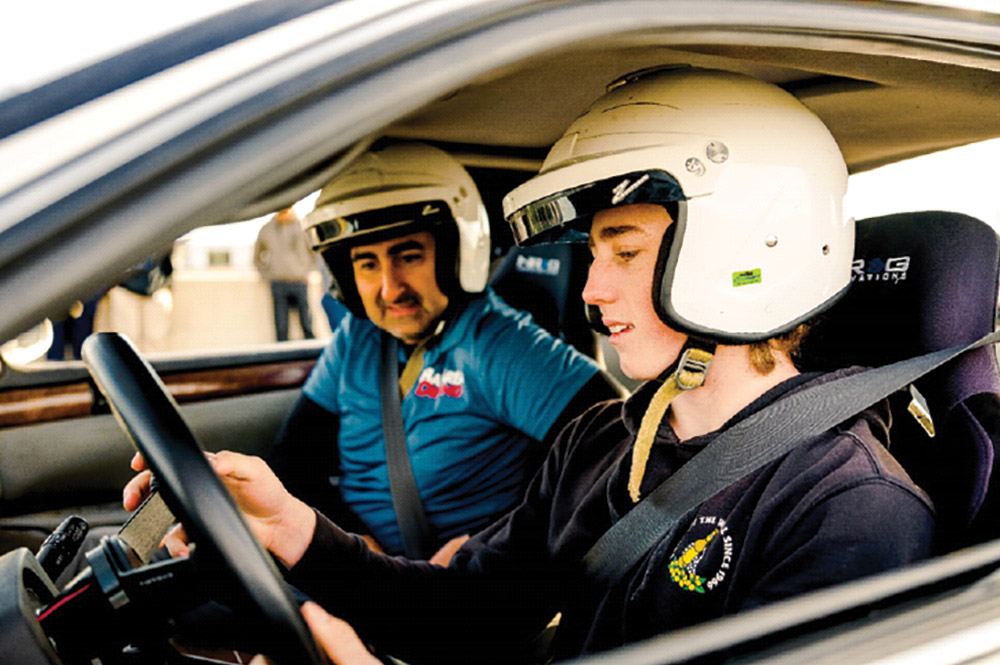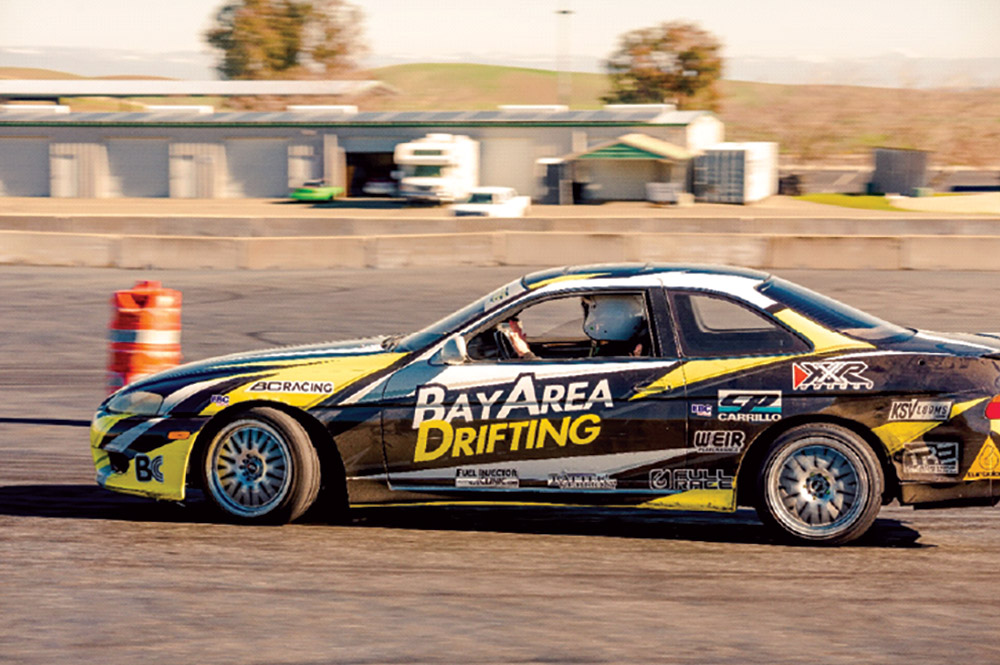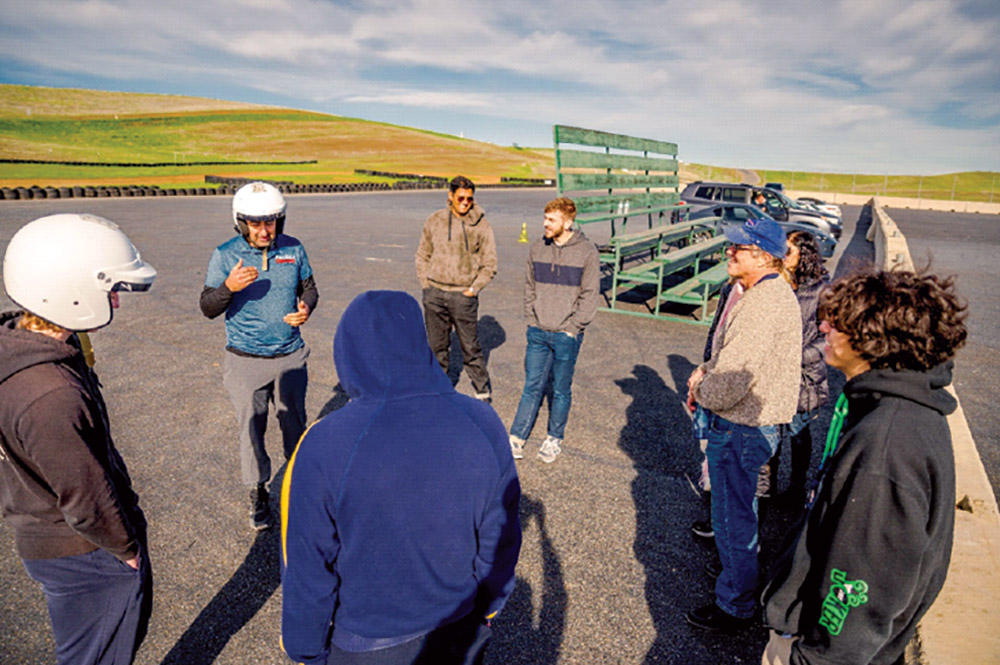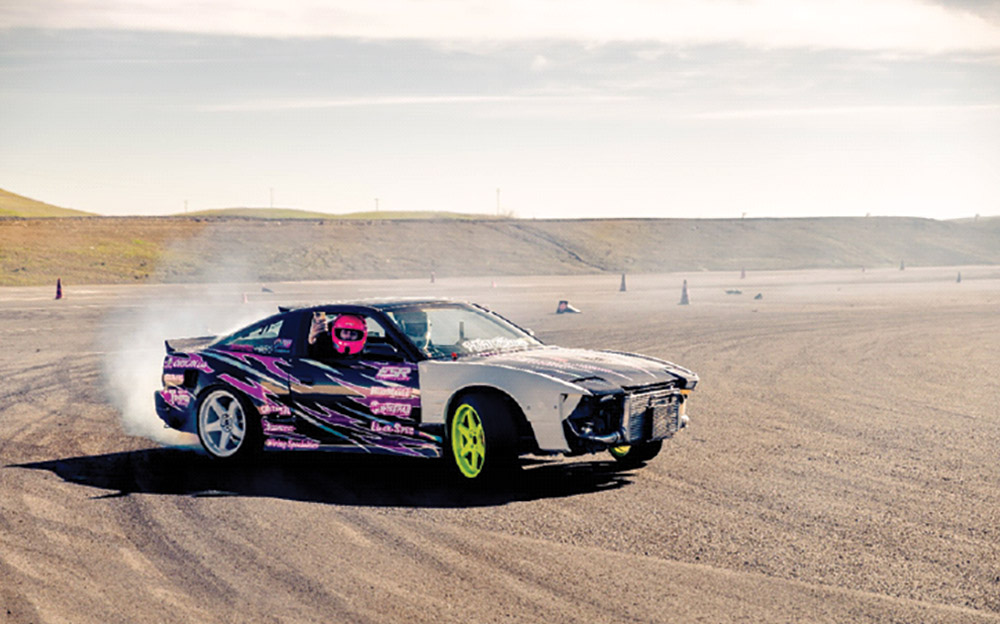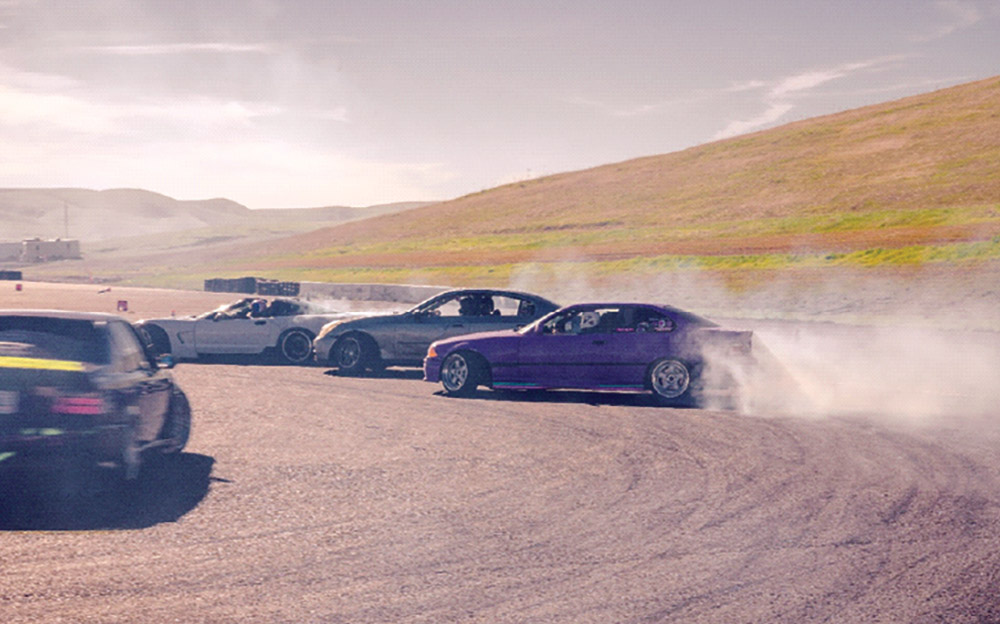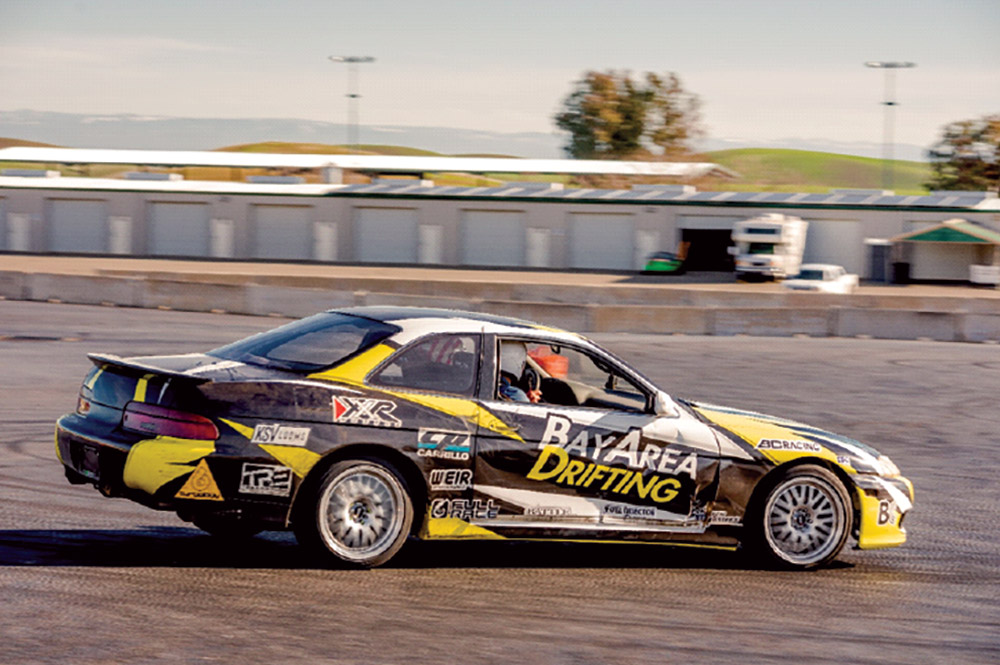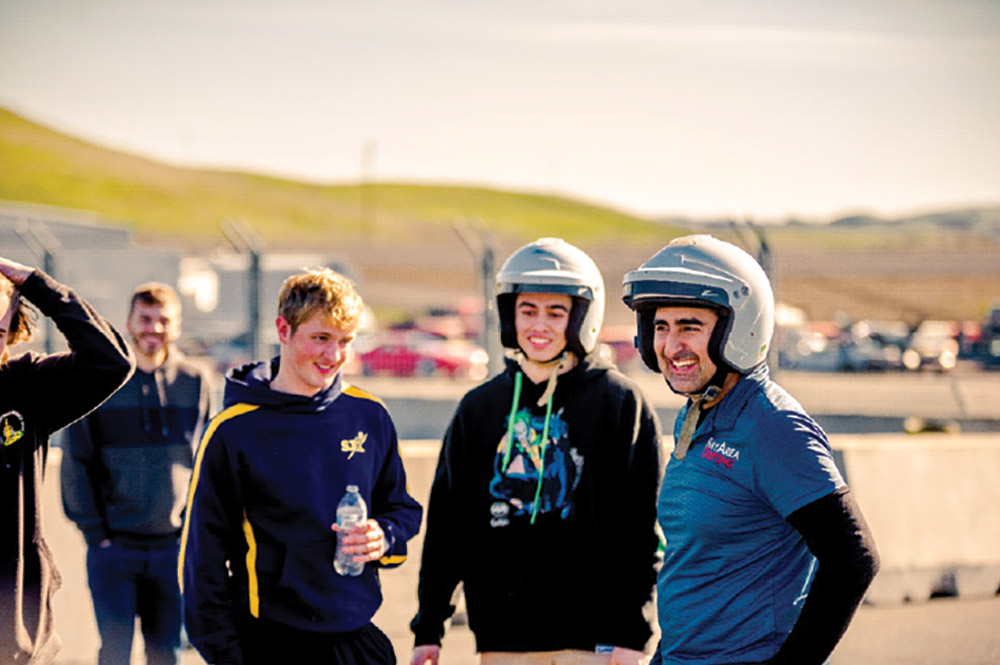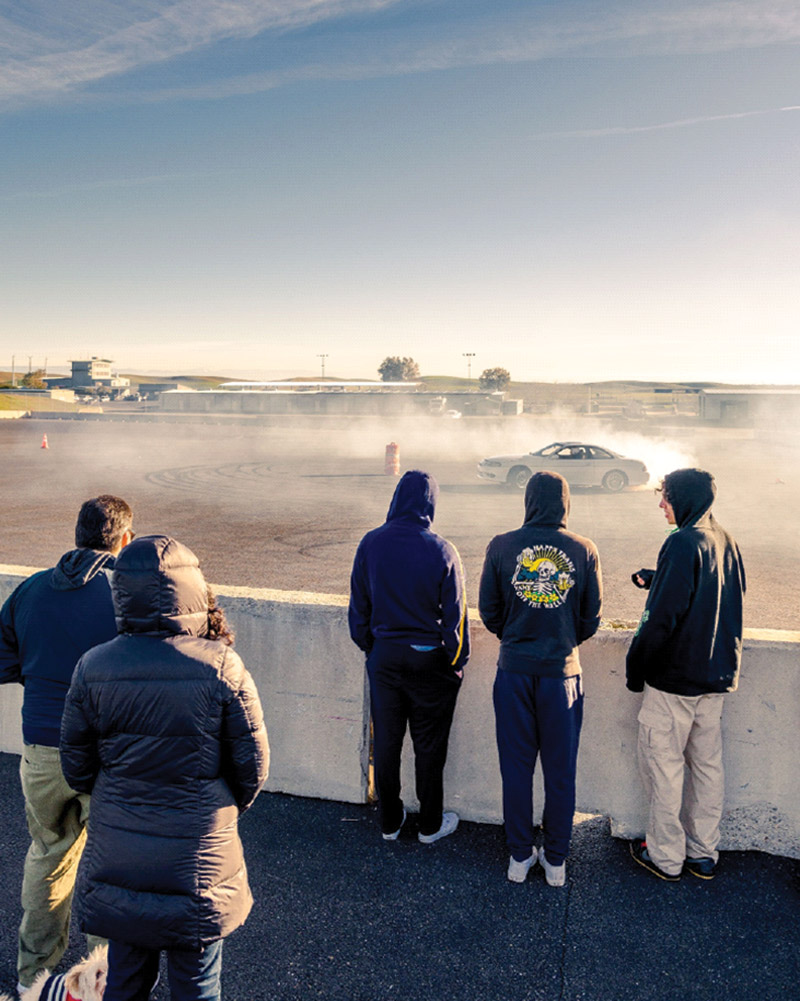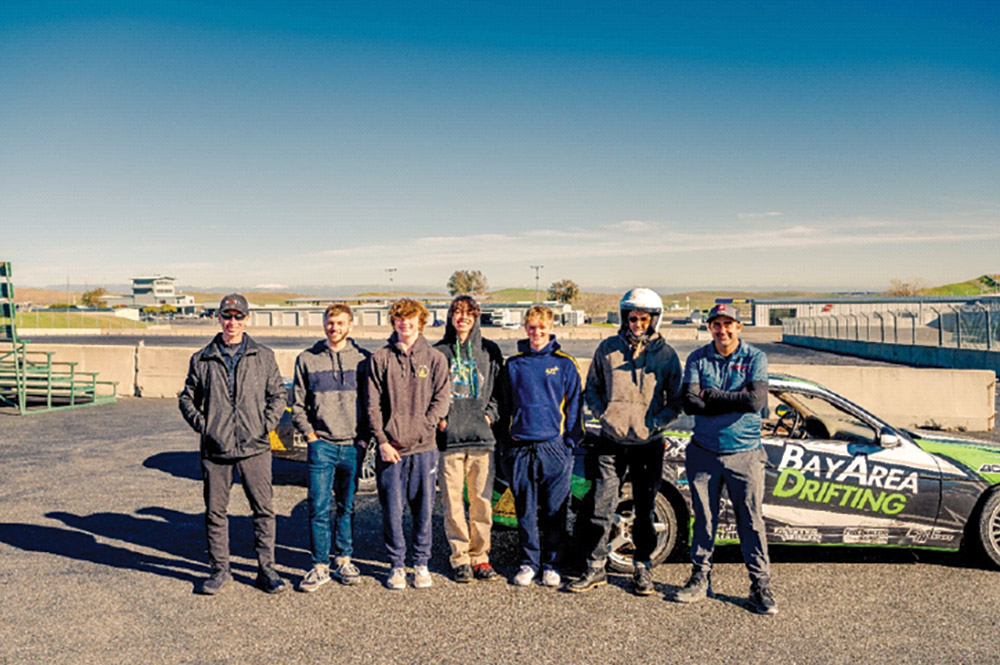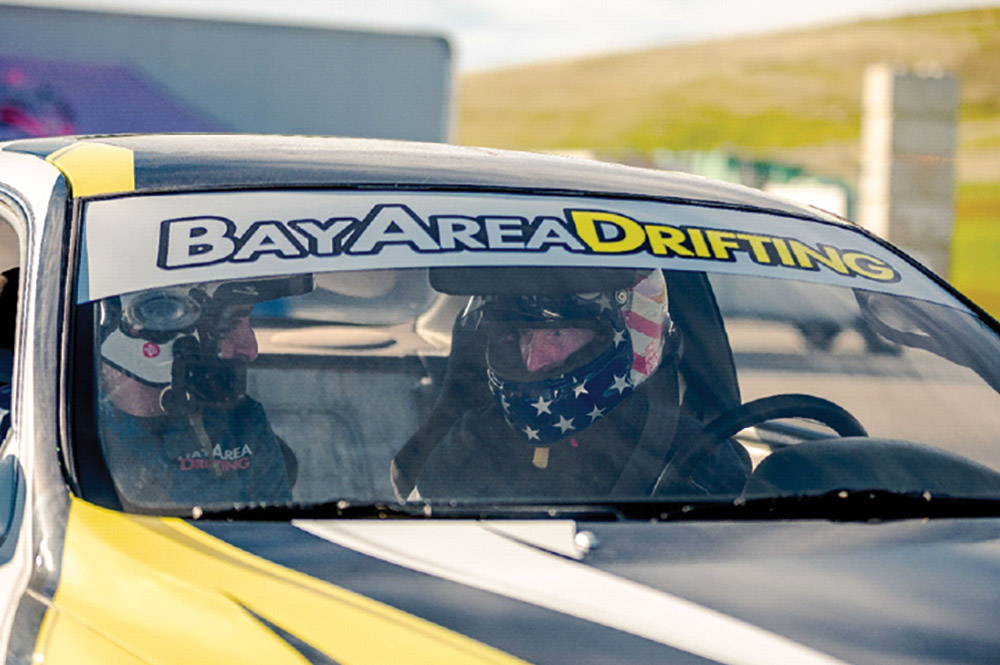As much as engineers in the worlds biggest manufacturers work to keep cars on the road with suspension wizardry and stability control electronics, others work just as hard to break the bounds of traction and slide sideways. Racing drivers pounding through rallies on gravel and snow learned how to maintain momentum through slippery corners, but it wasn’t until the youth of Tokyo took advantage of windy mountain roads that driving sideways on its own became popular.
Making a machine dance and conjure giant clouds of smoke is both great fun and an exercise in car control. In addition to the visual treat, the driving techniques echo classic lessons of smooth steering inputs and keeping steady sight lines.
To learn the art of driving on the edges of traction, Speed Journal Principal Jeff Francis headed to Thunderhill Raceway in California for a day under the care of Joe Farasati and Bay Area Drifting. It is an experience, but the program is unquestionably a school rather than only a driving experience. Farasati drifted competitively for over a decade before launching a school to share his knowledge and passion with others.
Farasati grew up racing BMX bicycles before he could drive. He began drifting in 2008 and became involved in all aspects of the sport – driving, spotting, coaching, and technical consulting. He’s based in Petaluma, California on the western edges of Sonoma wine country. He splits his time between Sonoma Raceway and Thunderhill Raceway.
Drifting school did not start by sending students to flail around with horsepower and open pavement. A more methodical approach started with driver positioning, safety, and car preparation. While the school has its own cars, students often want to learn with their own cars or principles to set up cars for drifting. Farasati helps not only build driver skills but also advises drivers looking to build their own car with decisions on suspension, transmission and other mechanical secrets that transform a regular car into a drifting car.
Before throwing any car sideways, both driver and car need to be ready. For the driver, good sightlines and hand positioning on the steering wheel is crucial. For the car, preparation involves tightening lug nuts, ensuring proper fluid levels, removing anything loose and strapping down anything that might move around while in motion, and setting tire pressures. All are good measures with benefits that extend beyond drifting.
Farasati reviewed the basics of oversteer and understeer and how those characteristics play out in the motorsport of drifting. Drifting requires an understanding of car behavior and being able to control the car rather than the other way around. He emphasized the ability to use all available tools to maneuver a car and manage momentum. Shifting the weight of the car with judicious use of steering angle and the power of spinning rear wheels is where the magic is made.
The Bay Area Drifting school cars are durable Lexus SC300 models with an in-line six cylinder normally aspirated engine at the front. The engine makes 200 horsepower and a stock manual transmission delivers the power to the rear wheels. While the limited slip might be forgiving on the road for daily driving, a welded rear differential keeps the rear wheels spinning. An aftermarket steering wheel is smaller than the road car which is the norm for drifting.
Bay Area Drifting’s preferred tire is the West Lake SA07. Narrow tires and hard compounds spin more easily than wider and softer rubber which is not only helpful to facilitate sliding, but for the budget as well. Higher tire pressures in the 40 to 50 psi range also make it easier to spin the tires because of the smaller contact patch with the pavement.
At its core, drifting is the skill of managing the car’s direction of travel with the steering wheel and throttle. By encouraging the front wheels to grip and adding power to break the rear wheels loose, the car will slide. Once underway, the driver uses steering wheel and throttle control to maintain momentum. From the outside of the car, a sideways slide with engine screaming and smoke pouring off the rear tires might look dramatic. Done properly, however, the experience inside of the car is smooth and calm. Farasati showed a video of a professional drifter’s hands on the steering wheel to illustrate. There was no drama, no hands crossing over top of the wheel, and flailing – just shuffling the wheel back and forth with small corrections.
The driver also learns to keep the car in a tight power band. Some modulation is necessary, but large swings of power adds or loses momentum and either loses the drift or results in spin. A driver can’t keep an eye on the tach while in motion but learns to listen to the engine note. The school Lexus liked being in the 5000 RPM neighborhood in the chosen gear.
Classroom time complete for the six students, Farasati warmed up the Lexus by taking a few laps around the pad and then demonstrated donuts. Each student was set for two sessions in the morning and two in the afternoon with Farasati instructing in the passenger seat.
Farasati taught from the passenger seat with each student. For the first session, the driver kept the car in first gear while driving in a tight circle with the steering wheel fixed in position. Farasati shouted “Go!” and the student mashed the throttle. It didn’t require any special coaxing to get the Lexus into slide, but balancing the throttle and steering input as required to keep the slide going. Consistent throttle and slight steering wheel inputs were ideal to make the sideway donut. On occasion, Farasati would actually reach over and steer and it was remarkable how he could match the steering input to the driver’s throttle to create a perfectly performed donut.
With some practice, the driver figured out how much throttle was required to maintain the drifting donut. By using more or less power, the driver transitioned between larger or smaller donuts.
Aside from working the steering wheel and throttle, sight lines were another skill to master. Clockwise donuts are easier for most drivers because the of the sight line through the driver’s side window. Switching to counterclockwise can be a challenge because vision looks across the dash and through the passenger window. Just as some people are more comfortable writing with a right or left hand, some beginner drivers are more comfortable drifting and looking in one direction.
Moving from donuts on an open pad to donuts around a central point was the next step. Donuts around a cone require more discipline and car control than donuts on an open expanse of pavement. From the passenger seat, Farasati varied the tightness of the donut to the cone on a one to three scale. “One” donuts meant tightly hugging – even touching – the center cone. “Two” meant increasing throttle for a medium-sized donut. “Three” required maximum throttle to maintain the widest sweeping circles possible.
As Farasati called out the donut size, the driver transitioned and moved the car in and out, closer and further away from the central cone as needed. The biggest adjustment was maintaining sight lines for the widest orbits. When the eyeballs got locked on the outside boundaries, the car often followed and clipped the outer cones.
In between sessions, the group came together for a debrief. Blending Farasati’s pointers, the driver’s self-assessment, and the group’s questions and observations helped everyone to learn.
During lunch, students, friends and families watched driving action on the larger Thunderhill pad courtesy of a grass roots drifting organization from the Bay area named DriftMaybe. Drivers of varied experience levels ripped a wide variety of cars around in circles. BMWs, Nissans and others poured smoke from their rear wheels with their own distinct engine notes and the smell of burnt rubber hung in the air. Armed with their morning knowledge, students were better able to understand what they were seeing and tell the differences between drivers with more and less experience. Students could see what was possible from their own drift education. The lunch-time highlight was easily four cars driving in tandem, sliding so close that they appeared connected with a bungee cord.
The next drill was figure eights on the open pad. They started with the standard donut but on Farasati’s signal, the driver turned the wheel while not changing the throttle. The slight turn of the wheel caused the car’s weight to shift and transition into a donut spinning in the opposite direction. The simple maneuver was easy to overthink and overdrive, but keeping it simple produced a smile rather than a frown.
Setting cones to anchor each end of the figure eight added another level of car control and driving discipline. Spin a donut around the cone, unwind the wheel, move towards the other cone, manage the transition in the middle to swing the car in the opposite direction, repeat. The transition was particularly tricky as the car’s swinging tail threatens to overtake the front and cause a spin. Sight lines were crucial to move from one cone to the exiting the drift, through the transition and then around the second cone. Again, the secret was smoothly managing the throttle and wheel and keeping it simple. Initially, the students traced oblong paths around the cones, but as they got smoother and more consistent, the figure eights became prettier. The drivers worked with the car rather than wrestling against the car. Farasati compared the difference between a hockey game and a ballet – one is choppy and abrupt and the other is fluid and graceful.
Farasati was a natural instructor. He understood what different students needed, both in terms of substantive feedback and timing for input. From the passenger seat, he kept a steady stream of encouragements and corrections, making surgical adjustments at the right time. He allowed students to progress at their own rate – not too slowly but not too quickly. Each drill was a building block, so it was crucial to squash bad habits or instincts early.
The coaching and instruction made Bay Area Drifting more of a school than a driving experience. Yes, there is a lot to learn from many driving experiences, but Farasati tailored his school and prevents it from being a generic one-size-fits-all situation.
On this day, three of the group were teenagers out for a day to experience drifting. While they undoubtedly learned about drifting and had a ton of fun in the process, they picked up car control knowledge and skills that will serve them well. With so many young drivers choosing to drive with a video game controller, it was great to see that some still prefer the real-world sensations of holding a steering wheel.
To cap off the afternoon, Farasati took each student for their own thrill ride around the pad. He left each with a mental souvenir and a demonstration of how the Lexus performs in the hands of a professional drift driver.
In the final debrief, Farasati spoke with each student individually. He provided observations on their progress, opportunities for improvement and strengths to build upon. Each discussed future plans and goals and Farasati provided his thoughts on paths to reach them, including an outline of further training he could provide if there was interest. He even called his students a few days after the event to recap and students have had time to digest and reflect on their experience. The personal touch was unique and appreciated.
Francis was looking to build his skills for an upcoming visit to the Italian Alps and a Lamborghini ice driving experience. Mission accomplished. Read more about that adventure here.
The Speed Journal would like to thank Joe Farasati and Bay Area Drifting. Learn more about Bay Area Drifting on their website.



